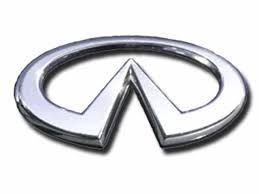J30 V6-2960cc 3.0L DOHC (VG30DE) (1995)
/Page-1537001.png)
Brake Rotor/Disc: All Technical Service Bulletins
Brakes - Steering Wheel Vibration/Pedal Pulsation
Classification:
BR00-002
Reference:
ITB00-009
Date:
February 10, 2000
TITLE:
AMMCO ON-CAR BRAKE LATHE OPERATING PROCEDURE
APPLIED VEHICLES:
All Infiniti vehicles with disc brakes
SERVICE INFORMATION
If an Infiniti vehicle exhibits steering wheel vibration and brake pedal pulsation when braking, it may be brake judder. Brake judder is created by
excessive thickness variation of the brake rotors. In most cases the thickness variation is a result of excessive brake rotor run-out. While brake judder is
usually associated with the front brake rotors, the rear brake rotors may cause it too.
The most effective way to eliminate brake judder and excessive rotor run out is to turn the brake rotors using the Ammco on-car brake lathe. This
required special tool will minimize the assembled brake rotor run-out more than the conventional off-car turning/installing on hub process. Please note
the following points when using the on-car brake lathe:
^
5GPrevent metal shavings from contacting or collecting on the ABS speed sensors. Remove any shavings that stick to the ABS speed sensor's
magnet. It is best to clean the ABS sensor with the rotor removed.
^
5GMark the exact location of the rotor (on the axle hub) before removing the rotor (see Figure 2 on page 2).
^
5GDo not tighten the wheel lug nuts with an air impact driver. Uneven or high torque applied to the lugs may distort the brake rotor and hub,
resulting in increased rotor run-out and excessive rotor thickness variation as the rotor wears.
^
5GIf new rotors are required, install them on the hub in different positions (index) to achieve the lowest run-out reading (equal to or less than
0.0012", 0.03 mm), using a dial indicator. See Figure 11.
SERVICE PROCEDURE
Figure 1
1.
Measure the rotor thickness at 10mm in from the outside diameter of the rotor to ensure the rotors can be turned. (See Figure 1).
A. If the rotor thickness is below specification, the rotor cannot be turned, but must be replaced. When installing new rotors, install them on the
hub in different positions (index) to achieve the lowest run-out reading (equal to or less than 0.0012", 0.03 mm).
B. If the rotor thickness is within specification, the rotor can be turned. Proceed with step 2 below.
